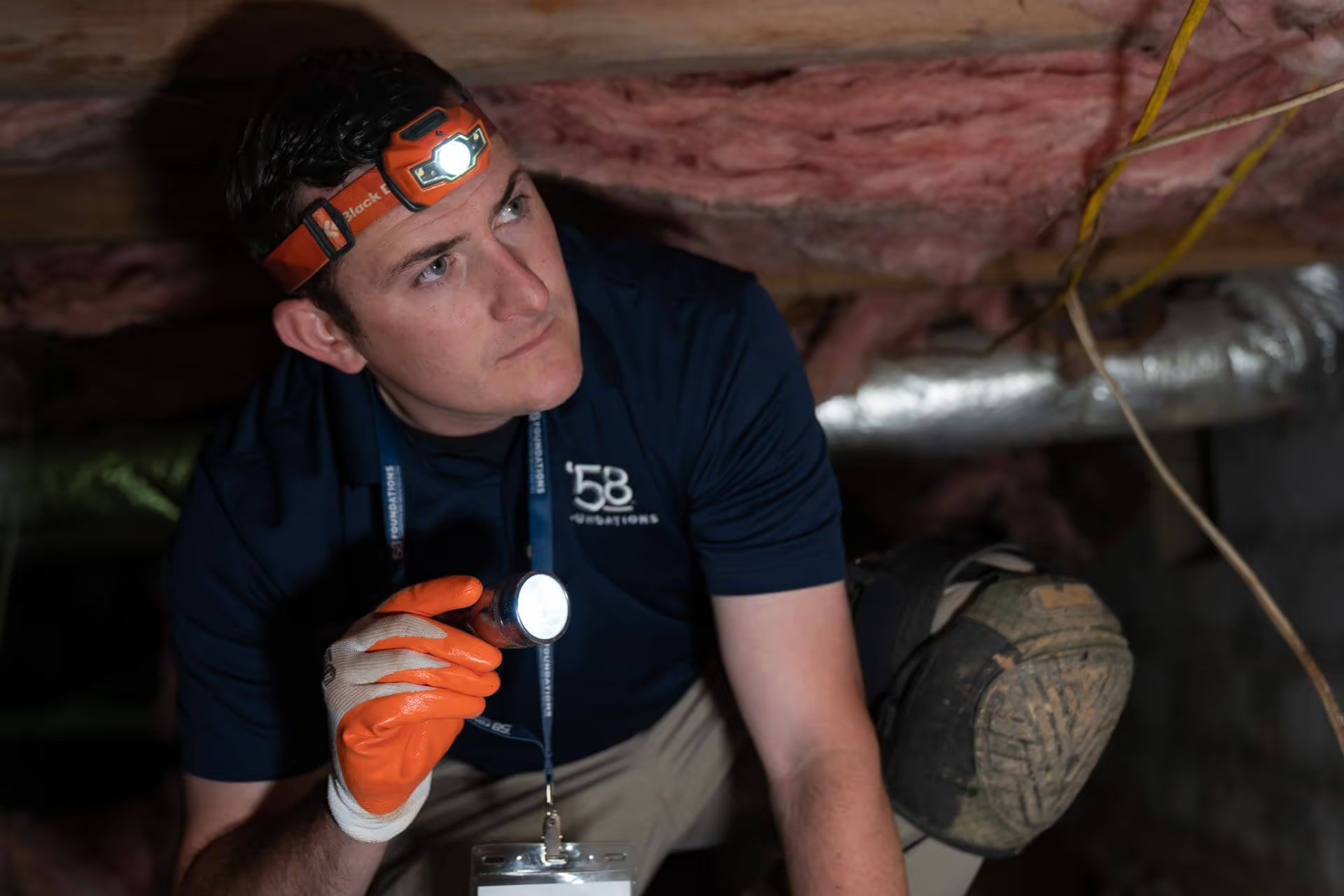Wet-dry vacuuming is just one step in the process of saving your basement carpet from water
A flooded basement can be extremely overwhelming. Your first thoughts are to rescue your belongings and goods, and save the basement carpet before mold starts to grow. Flooded basements can occur from a broken sump pump, leaky plumbing, floodwater over saturating the ground around your foundation, or seepage through the cracks in your foundation floor or walls. It is important to stop the source of water if possible. Next, follow the steps below:
When your basement floods you will most likely have standing water to remove this you will need to use a wet-dry vacuum or a pump to remove as much water as you can before getting to the carpet. It is important to remove as much water as possible in this fashion first. The longer the water is allowed to sit, the more water damage may be done to your basement and any items within. Run the vacuum slowly over the entire flooded space, including the carpet, to extract all the water possible. Once the vacuum stops pulling up water, move on to the next step.
First, you’ll want to remove any water-damaged furniture, boxes, or other items from the basement. This is because mold grows on organic materials like paper, wood, leather, and fabric made from natural fibers. Next, use fans and dehumidifiers to circulate fresh air through the space. If the weather permits, open windows and doors. However, if it is too humid, run the air conditioner to minimize moisture in the air.
When the previous two steps are complete, remove the carpet from the tack strip and discard the wet padding. Use chairs or ladders to “tent” the carpet. This will allow air to circulate and fully dry the sub floor.
For the final step, it is imperative that you know the basement and your carpets are fully dry. If possible, conduct moisture tests to find any hidden pockets of water. Any moisture that is trapped in the carpet is a risk for mold and mildew growth. Mold in the basement carpet will not only give your basement a musty smell, but their spores can trigger allergy and asthma symptoms.
Some suggest finding a professional to steam clean and deodorize the carpets. Give the carpets a chance to dry for 24 hours. Once the carpets are 100% dry they can be reinstalled.
A flooded basement is a headache for any homeowner. Basement flooding can come from floor or wall cracks, or an inadequate sump pump. Once moisture enters your basement it creates a perfect condition for mold to grow. If your basement leak is untreated it is bound to happen again. With a ’58 Foundations & Waterproofing basement waterproofing system, your basement can be made safe and dry again. Whether you use your basement for storage or you want to turn it into a finished space, our interior basement waterproofing solution will make it possible.
If you’d like a free inspection of your foundation cracks or sump pump, contact ‘58 Foundations & Waterproofing for a free basement waterproofing estimate.
Unfortunately, flooded basements happen. Whether it’s from living in an area with heavy rains or because of ruptured plumbing, there’s a chance that your basement can turn into a miniature pool. When flooding occurs in your basement, you will be faced with various potential dangers. Which is why it is important to have a flooded basement cleaned as soon as possible. But whether you’ve experienced a flooded basement, or you’re looking to learn more so that you can prepare, we’re here to help you figure out what to do next.
First thing’s first, stay out of the water as much as you can. In the case that sewage has been brought up through your floor drains during the flooding, the water can be full of harmful bacteria. Also, if you have any electrical equipment in your basement, it could make the risk of electrocution all the greater. Instead of trying to wade into the water or risk falling in, it’s time to make some calls to begin the wet basement repair process.
If you have electrical equipment in the basement, call for the electrician. They will turn your power off for you. Once the risk of electrocution has been removed from the equation, it’s time to call in the professionals to deal with the water.
Depending on the source of your flooded basement problem, that will help you figure out who to call next. If you have a ruptured pipe, water tank, or waste line, calling for a plumber will be your next step. Or if it’s because of a septic tank backup or because your sewer line has become clogged and backed up, you may want to call for a septic specialist. Also, you might want to speak with your local sewage department to see if the sewer clog is somewhere in your neighborhood (it may even be affecting your neighbors too).
If your flooded basement is because of foundation problems, then you may need to contact a foundation repair expert. They can inspect your basement and design a solution. These solutions may involve sealing cracks or cleaning out the French drains in the basement. With the right foundation or basement repair expert, you can account for all possible sources of leaks. If you have a preexisting drainage system that’s failing, they’ll know how to clean or replace the French drains in your basement.
But now that you know who to call, you may be wondering: how much does it cost?
The total cost for your basement cleanup depends on how much water has entered your basement. Another factor is how quick the water gets removed. The longer water sits in your basement, the more damage that can happen! From minor pooling to a severe flooding of the basement, repair costs can range anywhere from $10,000 to $50,000. These are just estimates. A professional will provide their own price quote based on their inspection of your basement.
There are some things that you can clean and tidy up yourself. But there are a lot of things that should be left to the professionals, such as the electrician. For example, there are specialists for checking your septic system after a flooded basement incident.
You can feasibly take care of your own replacement drywall and carpeting if you had done up your basement. Along with removing all water-damaged items in your basement, you should also be sure to disinfect everything that was within the water’s reach. You wouldn’t want any harmful bacteria to be lingering in your basement. The cleaning process will also help prevent mold from gaining a foothold.
Also, if you live in an area that you suspect may have flooding occur, be sure to double check with your homeowner’s insurance. See if there is coverage or an option for coverage against flooding. Flood insurance can do you a great favor in recovering from such an event. However, be sure to be thorough in your documentation in the event of a flood. Take lots of pictures and videos of the damage that has occurred.
Many wet basement situations are caused by what’s known as hydrostatic pressure. This pressure is created when water collects and sits against your foundation. As hydrostatic pressure builds, water can get pushed through the cold joints (such as the seam between the basement wall and floor slab) and moisture can seep through the porous concrete. After enough time and repeated pressure against the foundation, the concrete may crack, providing an easier way for water to leak in.
Knowing that hydrostatic pressure is the source, the question becomes how to prevent it from becoming a problem. There’s no way to completely keep water and moisture out of your basement. But you can take control of where that water and moisture goes. That’s what interior basement waterproofing can do for you.
For an interior basement waterproofing system, a waterproofing expert will install drainage channels along the inside perimeter of the basement. Those channels are designed to collect incoming water and lead them to a sump pit. Within the sump pit, a sump pump then pushes the water out of your home through a discharge pipe. The water is dispensed outside away from your home, so that it can’t reach your foundation. The end result is a reduction in hydrostatic pressure, and your basement remains dry.
Whether your French drains are failing, or you have a basement wall with leaking cracks, ’58 Foundations & Waterproofing has the high-quality products and honest methods to make your basement safe and dry once again with our basement waterproofing methods. From effective drainage channels to sump pump installation, we’ll help keep water out of your basement and foundation, so that you can have the peace of mind you deserve while using your basement. Call us today to schedule for a free basement waterproofing inspection and estimate!
It’s a key part of all our homes! As one of the most common interior building materials used in your home, it’s likely that you will experience drywall damage at some point in your home’s life. For drywall water damage, it can occur when there’s been a flood that gets into your home. Or it can happen when there’s been a water leak in your house such as from a leak in your plumbing. You may be wondering if there’s a way to save your drywall instead of having to replace it—but the answer is a bit trickier than a simple yes or no.
To find out, it’s important to first understand that drywall is typically made mainly of gypsum with some glued paper—the way that gypsum interacts with water is that it can retain water and moisture for a lengthy period, which can lead to problems if there’s too much water. If you’re wondering if wet drywall can be saved or how to repair wet drywall, be sure to read on!
While it is possible, trying to save your drywall runs the risk of mold growth still happening should any moisture be left behind. It is highly recommended that you get the drywall replaced. But you can at least slow down any mold growth that may occur while you await repairs. Should you discover the wet drywall shortly after it has gotten soaked, you may be able to dry it off with the aid of drying rags, a fan, and a dehumidifier. Soak up any standing water that you can with the rags. Then use a dehumidifier and a fan to remove airborne moisture and encourage air circulation.
Call for a professional contractor to help with their drying techniques and specialized drying equipment. With their expertise, there is a chance that your drywall can be saved.
If too much water has already soaked into your drywall, it will likely continue to deform and fall apart. In turn, drywall replacement will be necessary. Furthermore, if your drywall has been wet for over 48 hours, there’s a chance of mold growth. Should mold begin growing in that portion of the drywall, it can spread to any wooden materials close by. Whether it’s from deformation or from mold, affected drywall should be removed and replaced by a professional. This repair will ensure that your home remains safe—if mold is involved, you may need wet drywall repair and professional mold removal.
There are ways to see if your drywall can dry up on its own or if you need a professional. First and foremost is to perform these checks as soon as possible. This way, no matter the course of action needed, you can get it done hopefully before mold appears.
Check for damp or saturated drywall and make the needed replacements ASAP. This will help make sure you have a properly insulated wall. It will help prevent mold growth in your house.
When mold begins to grow in your house, it will start releasing spores into the air. This is a part of its life cycle. But those spores can get caught up in the air circulating in your home. Next, the mold spores may reach your living spaces, potentially triggering allergic reactions ranging from congestion to severe asthma attacks. If your drywall has been wet for more than 48 hours, the safe option would be to have it promptly removed and replaced with new drywall. The sooner the better, and you can keep your home free of mold!
Should you notice an odd discoloration in your drywall after it’s gotten wet, there’s a chance that mold has already taken hold. It will likely take any opportunity to spread, creating potential health hazards as well as damage to your house structure. With over 64 years of expertise in mold removal, ’58 Foundations & Waterproofing can help put a stop to mold before it gets worse and wreaks havoc in your home! Give us a call today for a free inspection and a detailed estimate—we’ll be happy to help with all your wet drywall repair needs!
On an ordinary day, a heavy rain storm comes passing through town. You might not think much of it, that is until you go to get something from the basement. Then you find an alarming sight waiting for you. It might be water trickling down your basement wall, or your finished basement’s carpet is suddenly soaked because of leaky crack in the floor. Whatever the scenario, it can be stressful for homeowners to discover that their basement is all wet.
Let’s take a look into the 6 main ways that water can enter your basement, and how this can be prevented!
As the soil becomes saturated, such as during a heavy rain storm, there is a buildup of hydrostatic pressure against the foundation walls and floor. Whether it’s cracks in your basement wall or floor, or your basement cove where the slab meets the foundation wall, these spaces provide water with a path of least resistance. From gravity to hydrostatic pressure, these are the forces that lead to water making its way through your foundation and into your basement.
Hydrostatic pressure is no joke. WaterproofMag.com explains why it’s the reason that water can cause cracks in concrete and penetrate its way into your basement. “This pressure can exert enormous forces. Four feet of water exerts nearly 300 pounds of pressure per square foot of wall. A basement footing with ten feet of saturated soil above it must withstand 600 pounds per square foot.”
With the proper maintenance habits and waterproofing measures in place, you can help make sure that water isn’t left to sit against your foundation to create that enormous hydrostatic pressure. Let’s dive into the ways that you can keep that water away from your basement. So that your basement remains dry, safe, and useable.
There are a variety of measures that you can take to help prevent water from collecting against your home’s foundation. The less water there is lingering against your foundation, the less hydrostatic pressure there is against your basement wall. This means fewer chances of damage or water intrusion. Have a look at these different ways that you can help keep water away from your foundation. The more of these you follow, the better chance you’ll have of enjoying a nice and dry basement for longer…
Your rain gutters are one of your first lines of defense against water damage on your foundation. By guiding rainwater from the roof to the ground, they prevent rainwater from seeping directly into the soil against your foundation and basement. But over time, rain gutters can get clogged with debris. This is why it is important to regularly inspecting and clean your rain gutters. While checking your rain gutters, be sure to tighten any loose extensions or gutter straps, and flush your downspout with a garden hose to make sure everything is clear and secure.
To help further protect your basement and foundation from water damage, consider extending your downspout. Be sure it’s reaching at least five feet away from your house. This will help ensure that rainwater from your roof will be deposited far enough that it doesn’t seep into your surrounding soil. You can also consider installing an underground drainpipe.
The ground around your foundation should be sloping away from your home. Try to aim for having the ground sloping downwards, descending about one inch for every foot away from your home. But you should never have the ground sloping upwards while walking away from the foundation of your home.
From the space around your plumbing pipes to foundation cracks, seal any gaps that can let water in. These openings can allow outside moisture and water to seep into your basement. For some of these gaps, like the space around your plumbing pipes as they pass through your foundation wall, it is possible to seal them yourself. But for foundation cracks, it’s highly recommended that you have a professional foundation repair contractor assist you. They can help inspect that foundation crack and determine if it is a problem and what solution it needs.
If you’re encountering serious groundwater problems, it may be wise to have your basement waterproofed. From the installation of French drains and sump pumps to waterproofing your basement walls, there are a variety of measures that can be used to keep groundwater moving out and away from your home. A waterproofing expert can help determine a personalized solution for your home’s unique situation.
While things like cleaning your rain gutters can be done fairly easily on your own, if you’re not sure about how to do certain things, it may be best to contact a waterproofing expert who can help. With the expertise of a waterproofing contractor, you can make sure that your waterproofing measures are installed and maintained properly. Ensuring a safe and dry basement for years and years.
Since 1958, ’58 Foundations & Waterproofing has been helping keep groundwater out of basements just like yours. Whether it’s repairing a part of the foundation, such as a bowing basement wall, or installing our effective ’58 basement waterproofing system, our experts are there to make sure your home is safe from groundwater intrusion, so that you’re able to make full use of your basement. To achieve the best results, we use quality products including our specially-engineered Channel ’58 drainage channels and our Workhorse sump pump with battery backup options
We have local offices throughout the Eastern Seaboard! Whether you reside near Baltimore, MD, Winston-Salem, NC, or Atlanta, GA, there’s a ’58 team of basement waterproofing experts ready to help!
Contact us today to schedule for a free basement waterproofing inspection and to receive a detailed price quote. With our basement waterproofing expertise, you can rest easy knowing that your basement will be kept safe, dry, and healthy!
Sources:
Relieving Hydrostatic Pressure
https:/www.waterproofmag.com/2015/10/relieving-hydrostatic-pressure/






We respect your privacy. By submitting, you authorize '58 Foundations and Waterproofing to reach you via call, email or text for information about your project needs. We will never share your personal information with third parties for marketing purposes. You can opt out at any time. Message/data rates may apply. Consent is not a condition of purchase. Privacy Policy